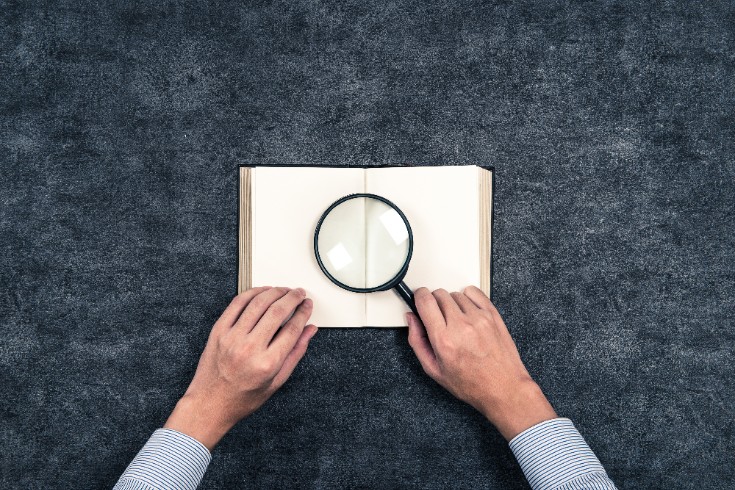Understanding Joint Ownership and Identification of Copyright Holders under Japanese Copyright Law

Japan’s content industry, encompassing fields such as film, animation, music, and literature, is globally acclaimed. For companies entering this vibrant market and expanding their business, a deep understanding of Japanese copyright law is essential. While the basic principles of copyright share international commonalities, Japanese law contains unique provisions that directly impact the outcomes and risk management of business ventures, especially in collaborative creative activities and large-scale projects like films. Without an accurate grasp of these provisions, rights relationships can become unclear, leading to potential disputes and loss of business opportunities.
This article provides a specialized commentary on two particularly complex and practice-oriented themes within Japanese copyright law. First, we delve into ‘joint copyright ownership’ that arises when multiple creators collaboratively produce a single work. Here, we detail the strict rules regarding the attribution, disposition, and exercise of rights, along with their exceptions. Second, we address the issue of identifying the ‘copyright holder,’ especially the unique legal framework established for cinematographic works. Reflecting the economic realities of the film industry, this provision offers an answer to the fundamental question of who holds the economic rights, which differs from general principles. Additionally, we will explain the duration of copyright protection, i.e., the term of copyright. This article aims to assist executives and legal professionals involved in Japan’s creative industries in making informed decisions.
Japanese Joint Copyright: Rights Attribution and Exercise in Collaborative Creations
It is not uncommon for multiple individuals to collaborate in creating a single work of authorship. In such cases, ‘joint copyright’ comes into existence, and the handling of these rights is subject to special rules under the Japanese Copyright Law.
Definition of “Joint Works” Under Japanese Copyright Law
First and foremost, it is crucial to understand the definition of “joint works,” which are a typical example of when joint copyright arises. Article 2, Paragraph 1, Item 12 of the Japanese Copyright Law defines a joint work as “a work created jointly by two or more persons, which cannot be separately utilized because the contributions of each person cannot be separated.” This definition includes two requirements. Firstly, two or more persons must have been involved in the creative act together. Merely providing ideas, supervising, or assisting does not qualify one as a joint author. Secondly, the creative contributions of each person must be inseparable. For instance, when multiple people collaboratively compose a piece of music and it is not clear who was responsible for which parts, this is a typical example of a joint work. In contrast, works such as a novel and its illustrations, where the contributions can be utilized separately, are called “composite works” and are distinguished from joint works. In the case of composite works, as a general rule, each author can exercise rights individually for their part of the creation.
The Principle of Unanimous Consent in the Exercise of Rights
In cases where copyright is held jointly, as with a work of joint authorship, a very important principle applies to the exercise of those rights. Article 65, Paragraph 2 of the Japanese Copyright Law stipulates that “Copyright held in common cannot be exercised without the consent of all co-owners.” The term “exercise” here not only refers to granting permission to a third party to use the work but also includes acts of using the work by one of the co-owners themselves. In other words, it is generally not permitted for one co-owner to independently decide to publish the work, post it on a website, or grant a license to another company. This strict rule aims to protect the interests of each co-owner and prevent situations where the unilateral actions of one co-owner could disadvantage the others.
Prohibition of Unjustly Refusing Consent
However, if the principle of unanimous consent is applied too strictly, there is a risk of falling into a ‘deadlock’ situation where a work cannot be used at all if one of the co-owners is uncooperative. To avoid such circumstances, Japanese copyright law provides an important exception. Article 65, Paragraph 3 of the law states that each co-owner “may not prevent the establishment of consent without just cause.”
What constitutes “just cause” is not explicitly defined in the law and is determined by the courts on a case-by-case basis. In past court decisions, there have been instances where it was deemed justifiable for a co-owner to refuse consent when another co-owner proceeded with licensing negotiations unilaterally without sufficient consultation with the others (Osaka District Court decision on August 27, 1992, in the “Quiet Flame Case”). This provision is intended to prevent the use of a work from being unjustly hindered by opposition without a rational basis, rather than mere dissenting opinions. If one of the co-owners continues to refuse consent without just cause, the other co-owners may file a lawsuit in court to seek a judgment that will serve as a substitute for that person’s expression of intent.
Confronting Infringement and Disposal of Shared Copyright Interests Under Japanese Law
Just as with the exercise of rights, the consent of all co-owners is required when transferring a shared copyright interest to a third party or establishing a security interest (Article 65, Paragraph 1 of the Japanese Copyright Law). Similarly, refusal of consent without ‘just cause’ is not permissible.
On the other hand, when taking legal action against copyright infringement by a third party, the rules differ. Based on Article 117 of the Japanese Copyright Law, each co-owner may individually request an injunction to stop the infringing activity. Considering the need to promptly halt the infringement, the agreement of all co-owners is not required in this case. However, when claiming damages, each co-owner is generally only entitled to claim an amount corresponding to their share of ownership.
In this way, the Japanese legal system for shared copyright ownership strongly protects the rights of each co-owner by requiring the ‘consent of all’ as a principle, while also providing an exception for ‘just cause’ to prevent the work from being left unused. This balances the interests among rights holders and the smooth use of the copyrighted work. For companies advancing joint development projects and the like, it is extremely important to conclude detailed contracts in advance regarding the use of the work and the decision-making process among co-owners to avoid future disputes.
Identifying the Copyright Holder: The Unique Legal Framework for Cinematographic Works Under Japanese Copyright Law
The fundamental principle of copyright law is that the ‘author’ who creates a work acquires the ‘copyright,’ which is the economic right, originally. However, Japanese copyright law sets a significant exception to this principle for cinematographic works.
Special Provisions on Copyright of Films Under Japanese Law
Article 29, Paragraph 1 of the Japanese Copyright Law stipulates the attribution of copyright for films as follows: “The copyright of a film work shall belong to the film producer when the author has promised to participate in the production of the film work for the film producer.” Here, “film producer” refers to the person who has the initiative and responsibility for the production of the film work, as defined in Article 2, Paragraph 1, Item 10 of the Japanese Copyright Law, and typically includes production companies or studios that handle financing and overall management of the production.
The legal significance of this provision lies not merely in the transfer of rights, but in the rule of “original attribution.” This means that instead of the authors, such as directors, acquiring copyright at the moment of creation and subsequently transferring it to the film producer, the law dictates that the copyright directly and originally belongs to the film producer from the moment it arises. The rationale behind this unique provision is the economic reality that film production requires substantial investment and involves a large number of staff in a major enterprise. Centralizing the rights with the film producer facilitates the smooth utilization of the work for distribution and licensing, and is understood to protect and encourage investment in the film industry, which is the legislative intent of this provision.
Who Is the “Author” of a Film Under Japanese Copyright Law?
When copyright ownership is attributed to the film producer, who then is considered the “author” of the film? Article 16 of the Japanese Copyright Law defines the author of a film as “the person who has creatively contributed to the overall formation of the film by being in charge of production, direction, performance, cinematography, art, etc.” Typically, this includes individuals such as film directors.
It is crucial to understand that while the author of the original novel used in the film, the screenwriter, and the composer of the music are indeed authors of their respective novel, screenplay, and music, they are not considered the authors of the “cinematic work” itself. They have not contributed to the overall formation of the film but have merely provided components in the form of their individual works.
The Location of Moral Rights Under Japanese Copyright Law
Article 29 of the Japanese Copyright Law stipulates that economic rights such as reproduction and distribution rights, which are property rights known as “copyrights,” are attributed to film producers. However, “moral rights,” which are considered to be exclusively personal to the author, are not covered by this provision. Moral rights include the right to decide whether to publish the work (the right of disclosure), the right to have the author’s name displayed (the right of attribution), and the right to protect the integrity of the work from alterations contrary to the author’s will (the right of integrity). These personal rights are retained by the “author,” such as the director, even when the copyright is attributed to the film producer. Therefore, film producers must be careful not to infringe upon the moral rights held by authors, such as directors, when altering a film.
The following table summarizes the rights relationship between the author and the film producer in the context of film works.
| Characteristic | Film Author (e.g., Director) | Film Producer (e.g., Production Company) |
| Legal Status | Author | Copyright Holder |
| Economic Rights (Copyright) | Does not hold | Holds all economic rights including reproduction, distribution, and broadcasting rights |
| Personal Rights (Moral Rights) | Holds (e.g., right of integrity, right of attribution) | Does not hold |
| Basis of Status | Creative contribution to the overall formation of the film (Article 16) | Initiative and responsibility in production (Article 29) |
Exceptions to Copyright Rules for Films and Practical Considerations Under Japanese Law
The copyright attribution rules for film producers set forth in Article 29, Paragraph 1 of the Japanese Copyright Act are robust, but there are significant exceptions to be aware of. Businesses must accurately determine which provisions apply to the films they handle.
Exception 1: Works Made for Hire
The first case where Article 29 does not apply is when the film meets the criteria for a “work made for hire.” Article 15 of the Japanese Copyright Act stipulates that, unless otherwise provided by contract, a corporation or similar entity is deemed the author of a work created by an individual in the course of their employment and published under the corporation’s name. This applies, for example, when a film production company commissions a film to be made by a director who is an employee. In this case, unlike Article 29, the corporation becomes not just the “copyright holder” but the “author” itself. As a result, both the economic rights of copyright and the moral rights of the author, which would normally belong to the individual director, are attributed to the corporation.
Exception 2: Films for Broadcasting
The second exception concerns films produced by broadcasters specifically for broadcasting. Article 29, Paragraph 2 of the Japanese Copyright Act provides that only certain rights of the copyright for films made exclusively for broadcasting are attributed to the broadcaster. Specifically, these include the right to broadcast the work, the right to cablecast it, and the right to reproduce it for broadcasting and distribute those copies to other broadcasters. Other rights, such as the right to screen the film in theaters or to sell it as DVDs, generally remain with the author, such as the director. However, it is possible to arrange differently by contract. This provision limits the scope of rights to accommodate the specific purpose of broadcasting and reflects a business model different from that of theatrical films.
Challenges in Practice as Seen from Court Cases
Even with these provisions, determining the rights for older films is not straightforward. The Intellectual Property High Court’s decision on June 17, 2010 (Case Number: Heisei 21 (Ne) 10050) is an important case that illustrates the complexity of this issue. In this case, the attribution of copyright for a film produced under the old copyright law was contested. The court recognized the director as one of the authors but ruled that the rights had been implicitly transferred to the film company, granting the company’s request for an injunction against copyright infringement. However, the court also denied the defendant’s negligence and rejected the claim for damages, citing the academic dispute over the interpretation of the authorship of films under the old law and the resulting ambiguity in the rights relationship. This judgment suggests that even when legal provisions exist, interpretations may not be established, and opinions on rights attribution can diverge. It particularly highlights the need for careful due diligence on rights relationships when dealing with historical content assets.
Thus, the Japanese Copyright Act establishes a hierarchical set of rules for rights attribution based on the production background and intended use of films. It provides legal frameworks optimized for three different scenarios: theatrical films, in-house works made for hire, and films for broadcasting. Therefore, when negotiating contracts or conducting M&A related to film rights, identifying which of these categories the work in question falls into is the starting point for all analysis.
Copyright Protection Duration: The Temporal Limits of Rights in Japan
Copyright is not an eternal right; it is subject to a legally defined protection period. Once this period expires, the work enters the “public domain,” where it can be freely used by anyone in principle.
General Principle of Protection Duration
The general principle of the protection duration under the Japanese Copyright Law is set forth in Article 51, Paragraph 2, and persists for “70 years after the author’s death.” This period was extended from 50 to 70 years following a legal amendment enacted on December 30, 2018. However, rights for works whose protection period had already expired at the time of this amendment’s enforcement are not revived.
Exceptions to the Principle
There are several important exceptions to this “70 years after death” principle, depending on the type of work:
- Jointly authored works: For works created by multiple authors, the protection period lasts for 70 years from the death of the last surviving author (Japanese Copyright Law Article 51, Paragraph 2).
- Anonymous or pseudonymous works: Works published without a known author or under a pen name are protected for 70 years after publication. However, if the author’s real name becomes known before the end of this period, the protection lasts for 70 years after the author’s death, as per the general principle (Japanese Copyright Law Article 52).
- Works published in the name of an organization: Works published under the name of a legal entity, such as a corporation (including works created in the course of employment), are protected for 70 years after publication (Japanese Copyright Law Article 53).
- Film works: Film works are also protected for 70 years after publication, similar to works published in the name of an organization (Japanese Copyright Law Article 54).
When calculating the protection period, according to Japanese Copyright Law Article 57, the count begins on January 1st of the year following the author’s death or the year of publication. For example, if an author dies in 2020, the protection period starts on January 1, 2021, and expires on December 31, 2090.
The table below summarizes the main protection durations under Japanese Copyright Law.
| Type of Work | Starting Point of Protection Duration | Protection Duration | Relevant Article |
| Individual work (General principle) | Author’s death | 70 years | Article 51 |
| Jointly authored work | Death of the last author | 70 years | Article 51 |
| Anonymous or pseudonymous work | Publication of the work | 70 years | Article 52 |
| Work published in the name of an organization | Publication of the work | 70 years | Article 53 |
| Film work | Publication of the work | 70 years | Article 54 |
It is important to note that while the starting point for the protection period of an individual’s work is “the author’s death,” for corporate entities or films where a legal entity is often the rights holder, the starting point is the objective fact of “publication.” Since corporations do not have the concept of death like natural persons, setting the starting point at the time of publication provides clarity and predictability to the duration of rights. This is a rational design to ensure the stability of management and transactions of copyright, an intellectual property right. Therefore, when corporations manage their intellectual property portfolios, it is essential to accurately analyze the nature of each asset and determine individually which protection period rules apply.
Conclusion
As explained in this article, Japanese copyright law, especially in creative activities involving multiple parties, has distinctive provisions that are internationally recognized. The strict principle of requiring ‘consent from all parties’ for the exercise of rights in joint works, and the unique legal framework that attributes the copyright of films to their producers as a rule, are prime examples. These provisions aim to balance the protection of creators’ rights with the development of the industry, but due to their complexity, they demand careful handling. Understanding these rules is not just about avoiding legal risks; it is a strategic imperative for maximizing business value in Japan’s content market.
Monolith Law Office has extensive practical experience in dealing with complex copyright issues like those discussed in this article, serving a multitude of clients both domestically and internationally. We have provided a wide range of legal services, including drafting joint production contracts, conducting intellectual property due diligence in media-related M&A, and resolving copyright infringement disputes. Our firm is staffed with multiple English-speaking attorneys who are qualified in foreign jurisdictions, combining deep expertise in Japanese law with an understanding of international business practices. Leveraging this unique strength, we can offer our clients clear and effective legal support. If you have any inquiries regarding Japanese copyright law, please do not hesitate to contact us.
Category: General Corporate





















